Sights in South Africa
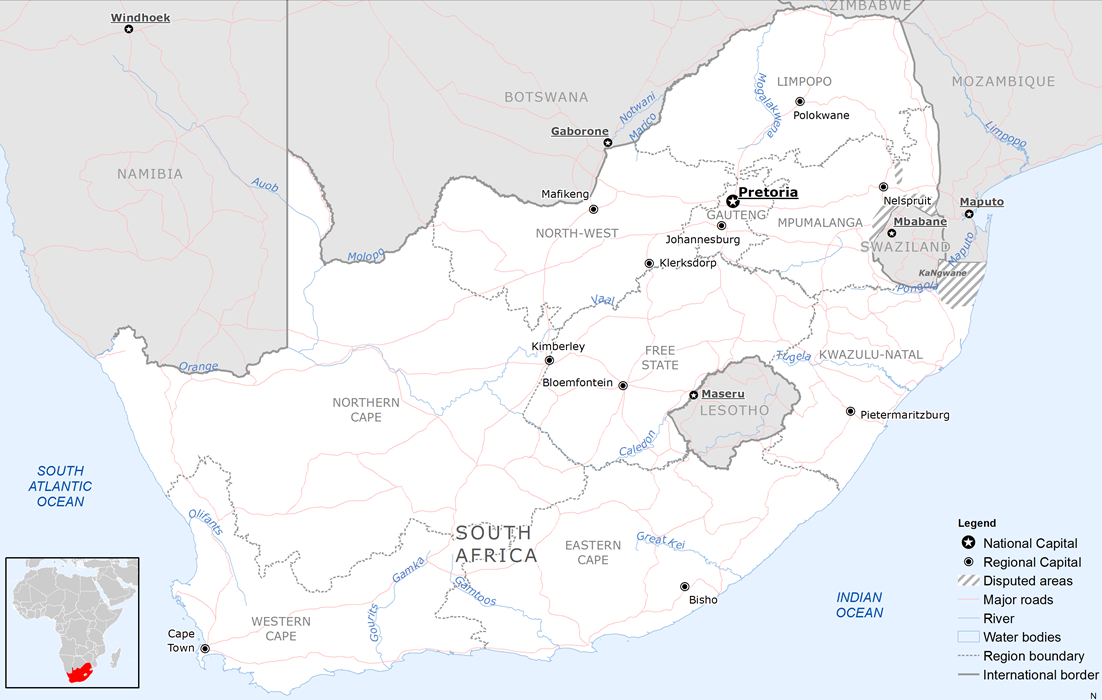
https://editor.mnweg.org/montessorischule-kaufering/dokument/trip-around-south-africa
Read the text and mark the most important information in each paragraph.
The Drakensberg Mountains, or “Dragon Mountains,” are the highest mountain range in Southern Africa, stretching over 1,000 kilometers across South Africa and Lesotho. Known locally as “uKhahlamba,” meaning “Barrier of Spears” in Zulu, the range boasts dramatic cliffs, rolling plateaus, and deep valleys.
The highest peak, Thabana Ntlenyana, stands at 3,482 meters in Lesotho, making it the tallest in the region.
A UNESCO World Heritage Site, the Drakensberg is famed for its biodiversity, home to rare plants and endangered species, like the Cape Vulture.
It also preserves over 40,000 ancient cave paintings known as San rock art. The cave paintings were done by the San people, commonly known as Bushmen, offering a glimpse into the life of Southern Africa’s earliest inhabitants.
Visitors flock to landmarks like the Amphitheatre, a 5-kilometer-long cliff face and the Tugela Falls, which is the world’s second-highest fall, with a water drop of 947 m.
Fun fact: The Drakensberg’s jagged peaks and mythical appearance inspired the name “Dragon Mountains” and some locals still tell legends of dragons residing in its caves.
The Drakensberg Mountains, or “Dragon Mountains,” are the highest mountain range in Southern Africa, stretching over 1,000 kilometers across South Africa and Lesotho. Known locally as “uKhahlamba,” meaning “Barrier of Spears” in Zulu, the range boasts dramatic cliffs, rolling plateaus, and deep valleys.
The highest peak, Thabana Ntlenyana, stands at 3,482 meters in Lesotho, making it the tallest in the region.
A UNESCO World Heritage Site, the Drakensberg is famed for its biodiversity, home to rare plants and endangered species, like the Cape Vulture.
It also preserves over 40,000 ancient cave paintings known as San rock art. The cave paintings were done by the San people, commonly known as Bushmen, offering a glimpse into the life of Southern Africa’s earliest inhabitants.
Visitors flock to landmarks like the Amphitheatre, a 5-kilometer-long cliff face and the Tugela Falls, which is the world’s second-highest fall, with a water drop of 947 m.
Fun fact: The Drakensberg’s jagged peaks and mythical appearance inspired the name “Dragon Mountains” and some locals still tell legends of dragons residing in its caves.
1
2
3
4
5
6
7
8
9
10
11
12
13
14
15
16
17
18
19
20
21


Achtung: zu viele/wenige Zeilen führen zu Punktabzug!
- What does
uKhahlamba
mean?
- Who made the cave paintings?
- To which landmarks do the tourists visit?
https://editor.mnweg.org/montessorischule-kaufering/dokument/trip-around-south-africa
Read the text and mark the most important information of each paragraph .
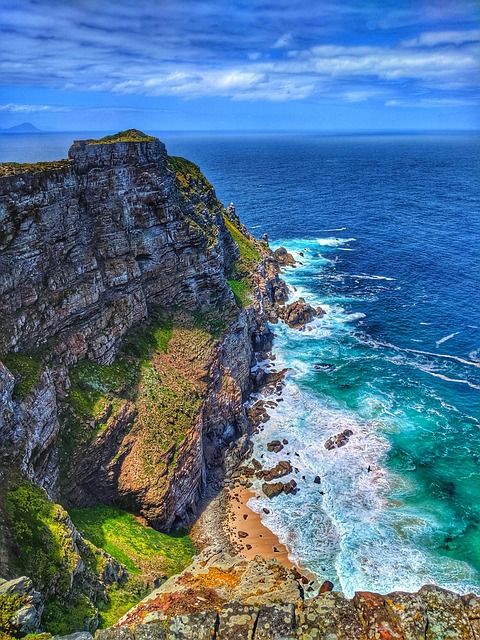
The Cape of Good Hope, often referred to as the “Cape of Storms”, is one of South Africa’s most beautiful landmarks. This rugged headland, rich in natural beauty and history, was first rounded by Portuguese explorer Bartolomeu Dias in 1488, who named it “Cabo das Tormentas” due to the treacherous storms he encountered. Later, King John II of Portugal renamed it the “Cape of Good Hope”. He was hoping that the new name would make the sea route to India more popular with sailors.
Located within Table Mountain National Park near Cape Town, it marks the meeting point of the cold Atlantic and warm Indian Oceans. These waters can be treacherous for ships, because the currents can cause dangerous waves that lead to shipwreck.
The Cape of Good Hope, often referred to as the “Cape of Storms”, is one of South Africa’s most beautiful landmarks. This rugged headland, rich in natural beauty and history, was first rounded by Portuguese explorer Bartolomeu Dias in 1488, who named it “Cabo das Tormentas” due to the treacherous storms he encountered. Later, King John II of Portugal renamed it the “Cape of Good Hope”. He was hoping that the new name would make the sea route to India more popular with sailors.
Located within Table Mountain National Park near Cape Town, it marks the meeting point of the cold Atlantic and warm Indian Oceans. These waters can be treacherous for ships, because the currents can cause dangerous waves that lead to shipwreck.
1
2
3
4
5
6
7
8
9
10
11
12
13
14
15
16
17
18
However, contrary to popular belief, it is not the southernmost tip of Africa - that title belongs to Cape Agulhas, situated further southeast. The Cape of Good Hope ist the southwesternmost point of Africa.
The area is home to incredible biodiversity, including the endemic fynbos vegetation, ostriches, and the playful Cape fur seals. Visitors can explore scenic hiking trails, like the one leading to the old Cape Point Lighthouse, which offers breathtaking panoramic views.
Fun fact: The Cape of Good Hope is often mentioned in tales of ghostly ships like the Flying Dutchman. According to legend, it was here that the Flying Dutchman was lost in a severe storm and is said to haunt these stormy waters.
Its history and dramatic beauty make it a must-visit destination for adventurers.
However, contrary to popular belief, it is not the southernmost tip of Africa - that title belongs to Cape Agulhas, situated further southeast. The Cape of Good Hope ist the southwesternmost point of Africa.
The area is home to incredible biodiversity, including the endemic fynbos vegetation, ostriches, and the playful Cape fur seals. Visitors can explore scenic hiking trails, like the one leading to the old Cape Point Lighthouse, which offers breathtaking panoramic views.
Fun fact: The Cape of Good Hope is often mentioned in tales of ghostly ships like the Flying Dutchman. According to legend, it was here that the Flying Dutchman was lost in a severe storm and is said to haunt these stormy waters.
Its history and dramatic beauty make it a must-visit destination for adventurers.
19
20
21
22
23
24
25
26
27
28
29
30
31
32
33
34
35
36
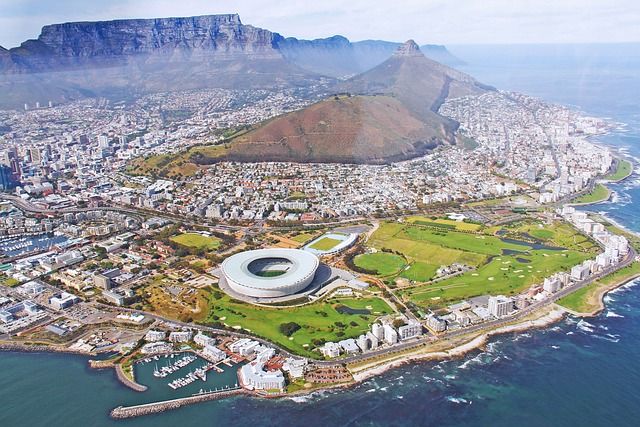

https://editor.mnweg.org/montessorischule-kaufering/dokument/trip-around-south-africa
https://editor.mnweg.org/montessorischule-kaufering/dokument/trip-around-south-africa
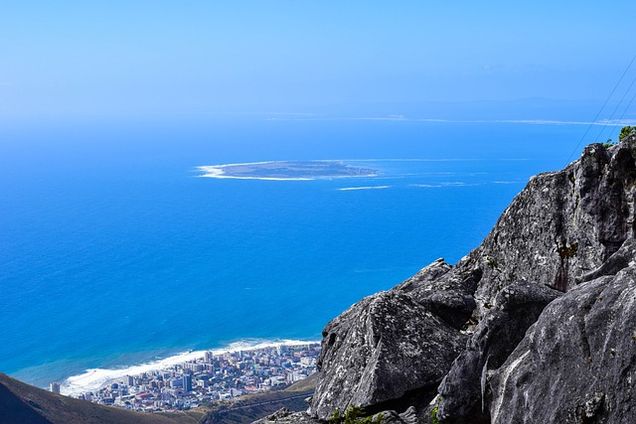
Robben Island - Prison and Leper Colony
Robben Island, located just off the coast of Cape Town, is one of South Africa's historical sites and a UNESCO World Heritage Site. For nearly 400 years, this small island served as a place of exile, imprisonment, and isolation.
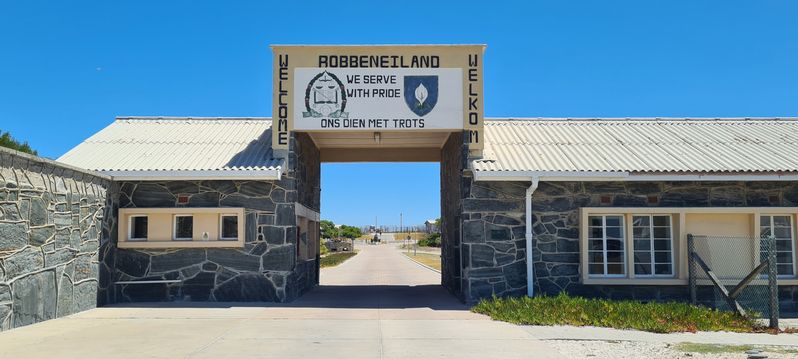
Most famously, it housed political prisoners during apartheid, including Nelson Mandela.
During apartheid, Robben Island became infamous as a maximum-security prison for political prisoners.
Nelson Mandela was imprisoned there from 1964 to 1982, spending 18 years of his 27-year sentence in a small 2x2 meter cell.
Mandela and other inmates endured hard labor in a limestone quarry under brutal conditions, yet the prison became a site of resistance and learning.
Prisoners secretly educated one another, exchanging ideas that would later shape a democratic South Africa. Mandela’s time on the island symbolized both the oppression of apartheid and the resilience of those who fought against it.
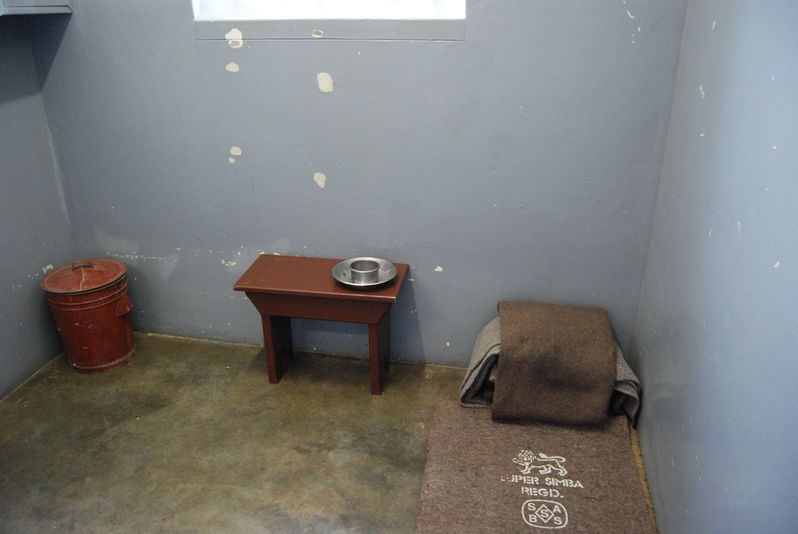


Robben Island was used as a leper colony between 1846 and 1931, serving as a place of isolation for people suffering from leprosy. Patients were forcibly removed from their communities and sent to the island, where they lived under harsh conditions with limited medical care. Many succumbed to the disease, and their graves remain on the island as a somber reminder of this period.
https://editor.mnweg.org/montessorischule-kaufering/dokument/trip-around-south-africa


